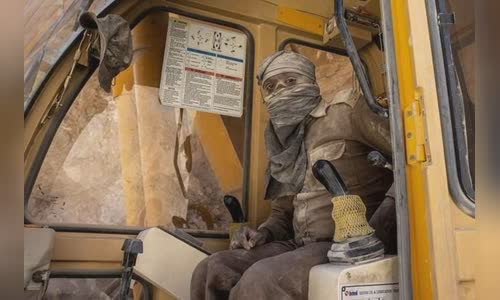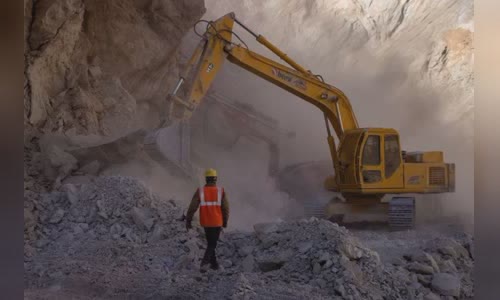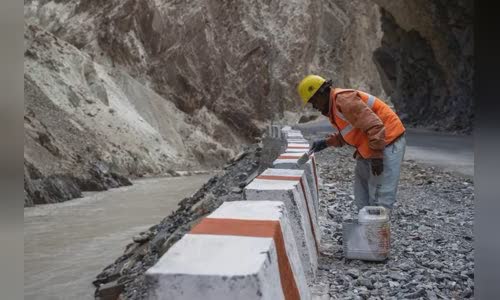Ligen Eliyas spun the hydraulic shovel, pushed the giant rock into the Zanskar River, clearing the place for the urgent completion of the Indian strategic road near the Chinese border.
The site is near Chilling village in Ladakh region, about 250 kilometers west of the site of the most serious confrontation between India and China nearly 50 years ago.

BRO workers work at the highway construction site in Ladakh, India, on September 17 Photo: Reuters.
When completed, it will be the only way to access much of Ladakh, including the border area.
"It will make it easier for the army to move after it is done," Eliyas said, his clothes and face covered with dust.
The protracted conflict in the remote western Himalayas erupted in a bloody clash in June, when 20 Indian soldiers were killed and the Chinese side of unknown casualties.
The 283 km long Nimmu-Padam-Darcha (NPD) highway, where Eliyas is working, is expected to be completed in three years.
The road connects to a 8.8 km long tunnel that India's Prime Minister Narenda Modi will inaugurate in a few weeks, through the Ladakh snow desert bordering Tibet.
The two main highways connecting Ladakh with the rest of India are closed for at least four months in winter.
With thousands of soldiers stationed at the border and showing no sign of withdrawal, India is pushing harder to clear the mountains as a trans-Himalayan road.
"We will not step back in the face of any difficulties for the sake of the country," India's Defense Minister Rajnath Singh told parliament this month, saying the government has doubled its budget for construction.

India Races To Build Border Bridges To Catch China - 2 Photo: Reuters.
Indian officials say the construction hastily this summer has been accused by China of destabilizing the mountainous areas.
"China does not recognize the so-called 'Ladakh Alliance Territory' illegally established by India and opposes the construction of infrastructure in the border area for military control purposes," the office said.
According to the latest agreement between the two sides, neither side can take any action to complicate the situation in the border area.
Ladakh split from Kashmir, the Indian-run region, in August last year after New Delhi stripped the autonomy of the Himalayan mountain region, where the majority of Muslims live.
China's network of roads, railways, logistics warehouses and helipads makes it possible for the country to move troops quickly to the region within hours, according to Rajeswari Pillai Rajagopalan, an expert at the Observation Research Foundation.
"China's infrastructure building is not only to deploy the force quickly, but also to help maintain the force in that area for a longer period of time," said Rajagopalan.
NK Jain, commander of the BRO Organization, the construction unit of the state of India, said the NPD project started in 1999 but froze for many years until a few years ago.
"Our work is going on at twice the rate in the past two years," Jain said.

India Races to Build Border Bridges to Catch China - 4 Photo: Reuters.
B Kishen, BRO's executive engineer responsible for overseeing the project near Chilling, said the drill was pushing explosives deeper and faster to blow mountains away, improving construction speed.
One afternoon recently, dozens of workers were cleaning up soil and rock on the newly exploded road.
Work will continue throughout the harsh winter, when temperatures drop below minus 40 degrees Celsius and high winds above 3,300 meters above sea level make road work even more difficult, Kishen said.
The government has identified 74 strategic routes along the Chinese border, of which 61 routes of BRO run through the border of 3,300 km.
The completed road network will shorten travel times between key Indian military bases, allow faster troop maneuvers and easier patrol in some areas, according to an Indian official.
"It will help reduce military spending," the official said, saying the right roads in all kinds of weather would replace the cost of air transport operations during the winter months.
"We will have a better chance of catching up with the pace of China," he said.



 Angelica Nordgaard
Angelica Nordgaard







